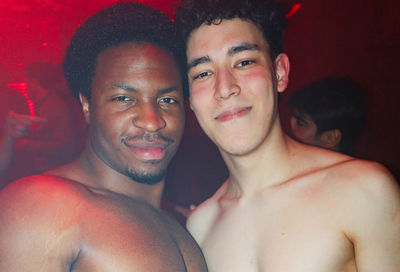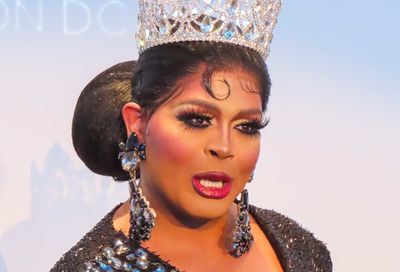Sex in the City
'Gay Sex in the 70s' deftly captures the feel of an iconic era, while balancing the celebration with what came later
Just after the film begins to roll in Gay Sex in the 70s, director Joseph Lovett tells the photographer he’s preparing to interview that the time period they’re about to discuss, “some people have talked about it as the most libertine period that the Western world has ever seen since Rome.”
The photographer pauses for a moment, obviously thinking back to the days in question. Then a small, sly smile comes to his face as he replies simply, “It was.”
Though much maligned in the popular culture as a decade of self-centered behavior and fantastically bad fashion choices, the ’70s are loved in retrospect for those very same qualities. And the ’70s remain one of the most iconic moments in gay history: a time when the community reveled in its new-found freedom, liberated and hedonistic, unaware of what would be coming in a few too-short years.
 Paradise lost: Fire Island in the 70s (Photo by Tom Bianchi) |
In so many films and books about the gay culture of the ’70s, the sense of doom around the corner pervades so heavily that it becomes hard to convey what the decade actually felt like to those who experienced it. And that’s essentially where Gay Sex in the 70s succeeds so well — deftly balancing the experiences of the time with the experiences that came later.
Not unsurprisingly, Lovett focuses his film exclusively on his own ’70s stomping ground of New York City — Manhattan, to be specific — and Fire Island, the east coast haven for homosexuality where gay culture exploded onto the streets after the riots of Stonewall. As recounted by his interview subjects, the Manhattan of the ’70s was a sexual smorgasbord, with a blow job around every corner, a quickie waiting at every lunch, an orgy available every night.
While Lovett opens the film with artist Barton Benes shuffling through photos of the friends he lost, he gives Benes and others the space to tell their stories of sexual exploration — sometimes boastingly, sometimes sheepishly, always with grins that seem to say “I can’t believe I was able to do that!” — without layering a lot of his own interpretation. Although you have to assume that some of his own interpretation comes through when he trains the camera on himself for his own personal recollections, including a funny story about a missed chance to participate in his first orgy.
Archival film footage of the gay sex scene on the New York piers, in the meatpacking district and inside the bathhouses, is unsurprisingly sparse, but Lovett has pulled together an impressive array of still photos that convey the hedonistic glee. Images of men having all sorts of sex — really, all sorts of sex — in broad daylight on the piers underscore just how different a time the ’70s were.
Gay Sex is at its strongest when focused on the more egalitarian sexcapades outdoors and in the city’s famed bars and sex clubs, but it loses steam when focusing on the more rarefied locations, including Studio 54 and Fire Island. It’s hard to shake the feeling that Fire Island, while an important part of the culture, was still a social phenomenon limited to a particular self-appointed A-list — it’s like trying to understand the meaning of gay men in D.C. by spending all your time in Rehoboth.
Things turn melancholy as Lovett’s subjects move inexorably toward the AIDS crisis, and how during the height of the ’70s libertinism they had “a childlike view of things,” with the idea that there were no consequences — all STDs were curable at the time, so increasing rates syphilis, the clap and all sorts of other things were dismissed.
And that’s the tragedy of the ’70s. It’s incredibly easy to get caught up in the unrestrained joy of people living their lives freely and openly for the first time, and believing there were no limits. It makes it all the harder to hear the stories of what happened when those limits were found.
Support Metro Weekly’s Journalism
These are challenging times for news organizations. And yet it’s crucial we stay active and provide vital resources and information to both our local readers and the world. So won’t you please take a moment and consider supporting Metro Weekly with a membership? For as little as $5 a month, you can help ensure Metro Weekly magazine and MetroWeekly.com remain free, viable resources as we provide the best, most diverse, culturally-resonant LGBTQ coverage in both the D.C. region and around the world. Memberships come with exclusive perks and discounts, your own personal digital delivery of each week’s magazine (and an archive), access to our Member's Lounge when it launches this fall, and exclusive members-only items like Metro Weekly Membership Mugs and Tote Bags! Check out all our membership levels here and please join us today!

















